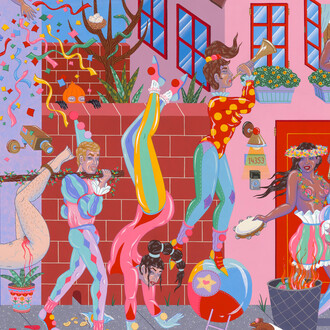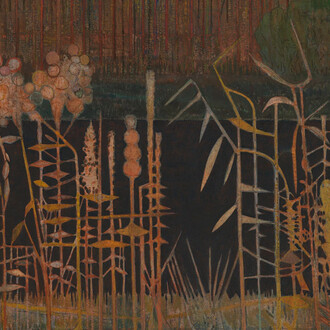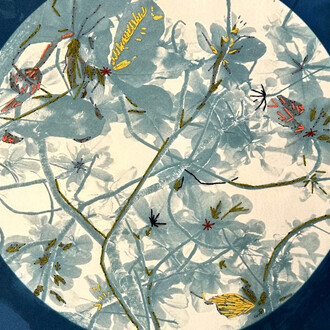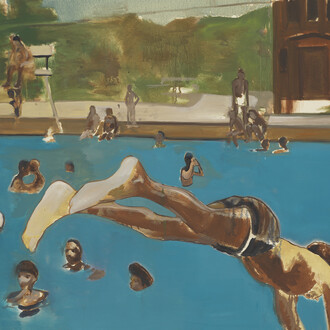Night Gallery is pleased to announce Form and feeling, a group exhibition that includes paintings made by Tony Bluestone, Strauss Bourque-LaFrance, Tomashi Jackson, RJ Messineo, Marisa Takal, and Zoe Walsh and sculpture made by Sahar Khoury and Sarah Zapata, curated by Ashton Cooper.
This exhibition is animated by an impossible question: How does feeling make its way into form?
How are the sensations, emotions, and valences of consciousness reflected in material? Can observers perceive the residue of that feeling? Can it be drawn out by a kind slow looking or ekphrasis or thick description? Or does it exist outside of language? And how might we describe and understand our own affective responses to paint on ground or woven fiber or shaped clay?
Educated, as I was, in theories that foregrounded the constructedness of human life, sociality, and artistic production, I came to see these questions as not just irrelevant, but embarrassing, passé, unintellectual, and associated with bad politics. Still, in meandering ways, I found myself continually moving back toward them, wanting to take them seriously, wondering how to talk about embodied feeling and phenomenological experience without being suffocated by the foundational myth of the expressive artistic genius.
Could foregrounding artists’ and viewers’ affective relationships to materials and form change the kinds of stories we tell about contemporary art? In his “Notes of a Painter” from 1908, Henri Matisse wrote: “I am unable to distinguish between the feeling I have about life and my way of translating it.” Keeping in mind the well-elaborated critiques of art historical modernism, what would it mean to take this claim seriously as a theorization of how art represents and elicits affect? What would it mean to “attend to psychology and materiality at the level of affect and texture” as Eve Sedgwick put it in the introduction to Touching feeling nearly 100 years later? What would it mean to hear artists talk about their feelings? What would it mean for observers to talk about theirs? Here is an invitation to move through the jumble of form and feeling.
(Text by Ashton Cooper)
















